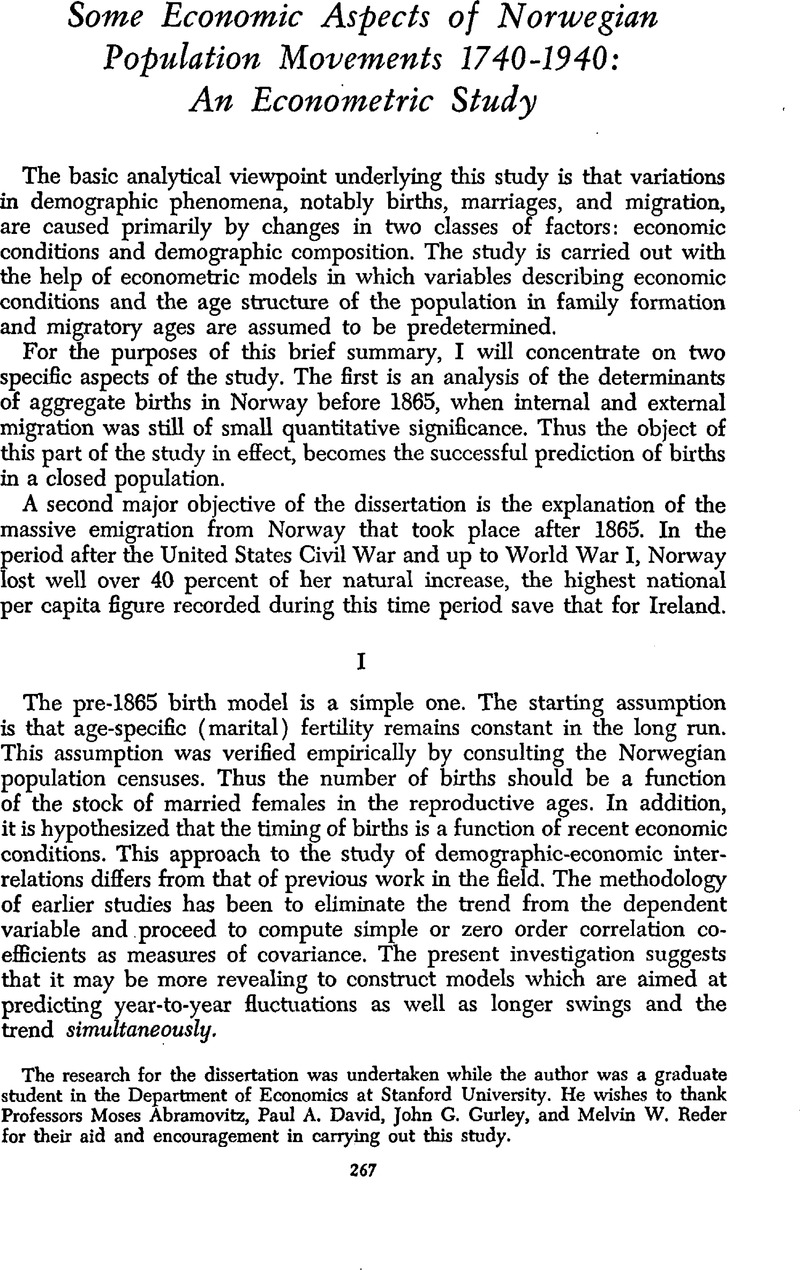Published online by Cambridge University Press: 03 February 2011

1 The original statement and treatment of such an hypothesis appeared over a hundred years ago in Sundt, E.Om Giftermål i Norge (On Marriages in Norway) (Oslo, 1855).Google ScholarKelley, A. C. in his recent article “Demographic Change and Economic Growth: Australia 1861–1911,” Explorations in Entrepreneurial History (Spring/Summer 1968), Vol. 5, No. 3Google Scholar pursues a similar hypothesis in greater depth.
2 Earlier historical migration studies are reviewed in more detail in the dissertation. There it is argued that many of these studies, notably the one by Jerome, H., Migration and Business Cycles (New York: N.B.E.R. Inc., 1926)Google Scholar, consider significant correlation between aggregate immigration and an indicator of economic condition in the United States as evidence of a “pull-only” interpretation without properly considering alternative hypotheses. Among the exceptions are two studies of Swedish emigration to the United States, one by Thomas, D. S. in Social and Economic Aspects of Swedish Population Movements 1750–1933 (New York: The Macmillan Co., 1941), esp. pp. 166–9;Google Scholar the other by Wilkinson, M. in his article “Evidences of Long Swings in the Growth of Swedish Population and Related Economic Variables, 1860–1965,” The Journal of Economic History, XXVII, No. 1 (March 1967), 32Google Scholar ff., and their conclusions are comparable to my own in this particular respect.
3 See Easterlin, R. A., ‘Influences in European Overseas Emigration Before World War I,” Economic Development and Cultural Change, Vol. IX, No. 3 (April 1961), esp. pp. 341–8.Google Scholar
4 Ibid., p. 348.